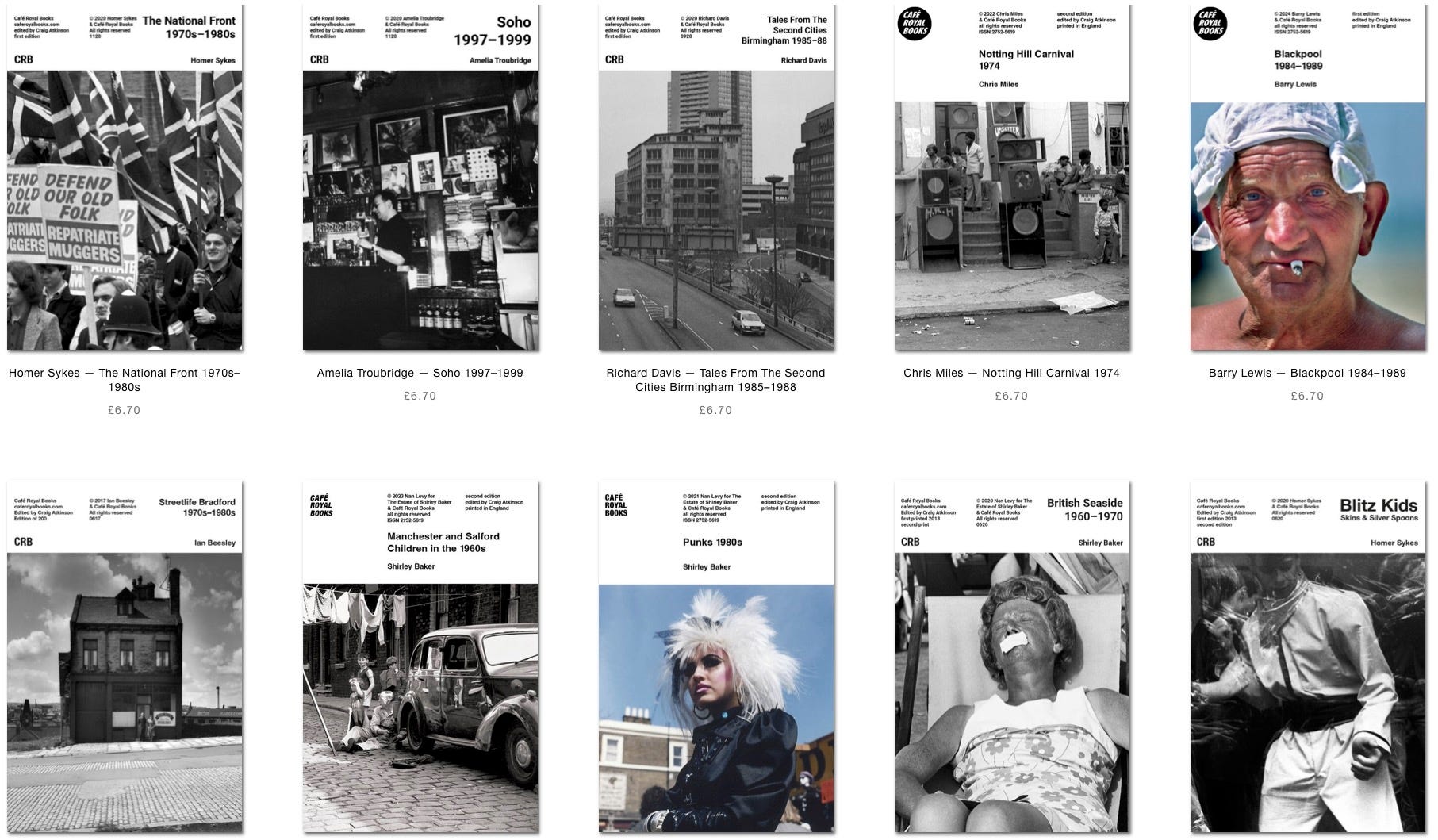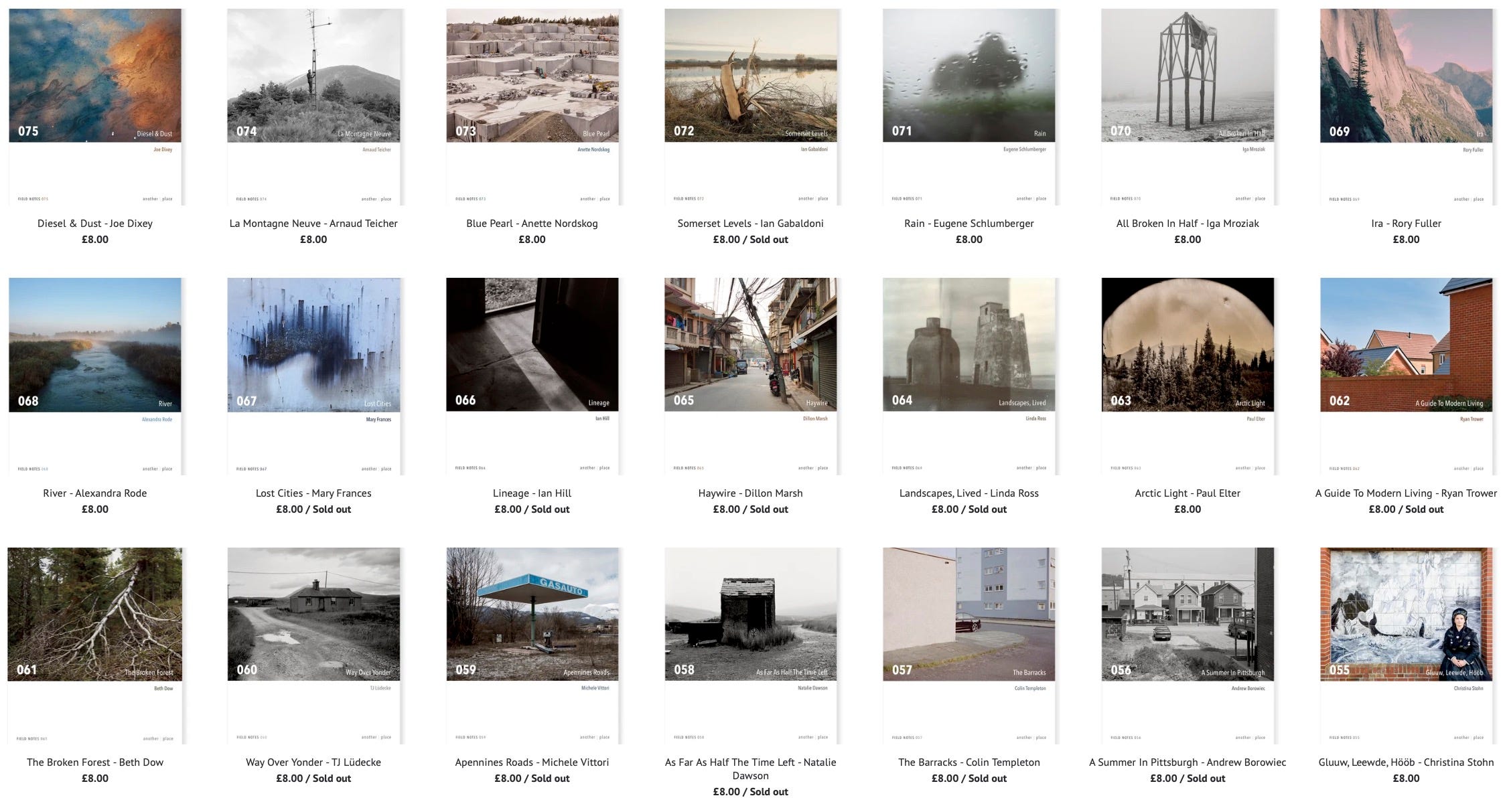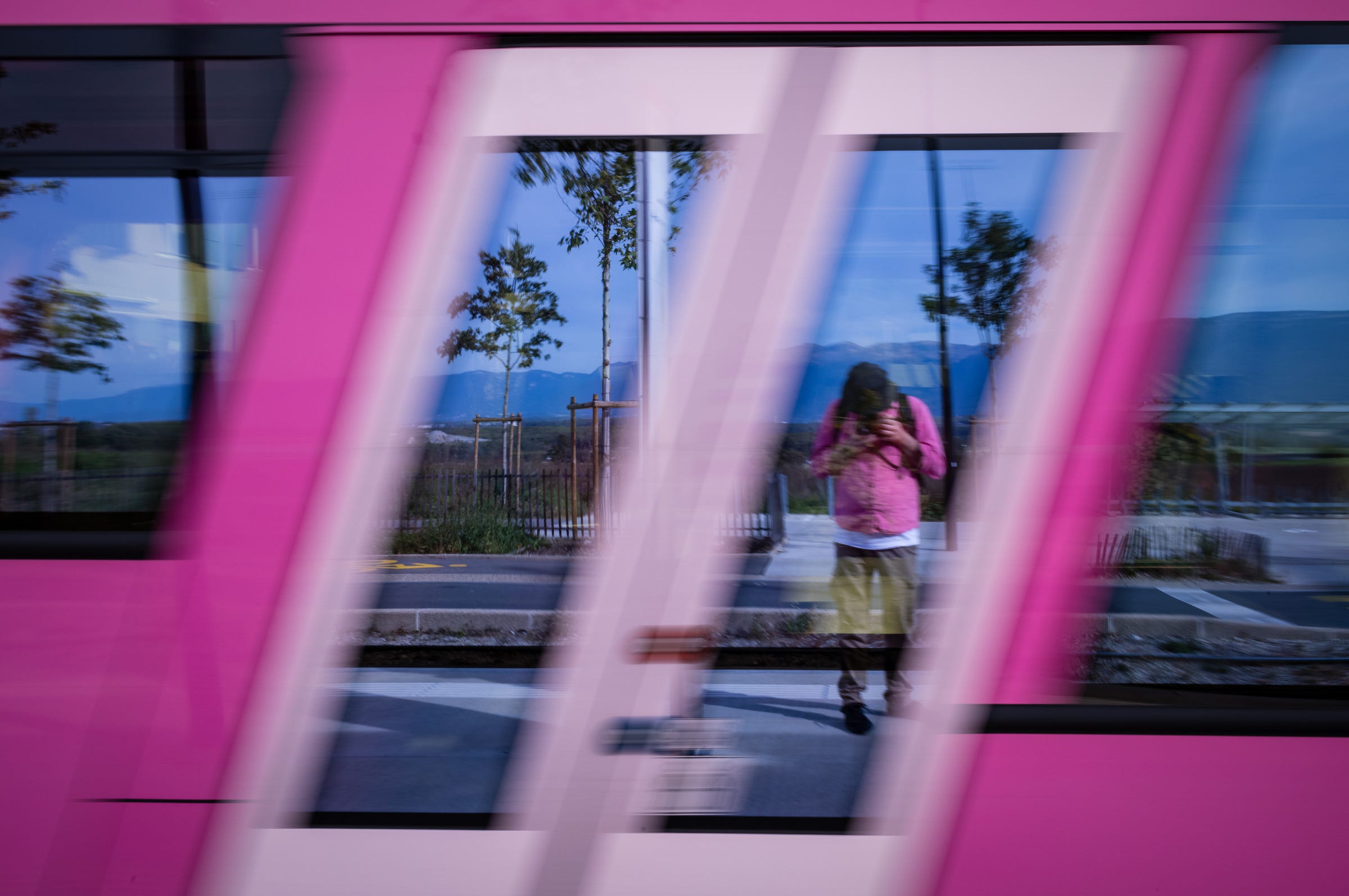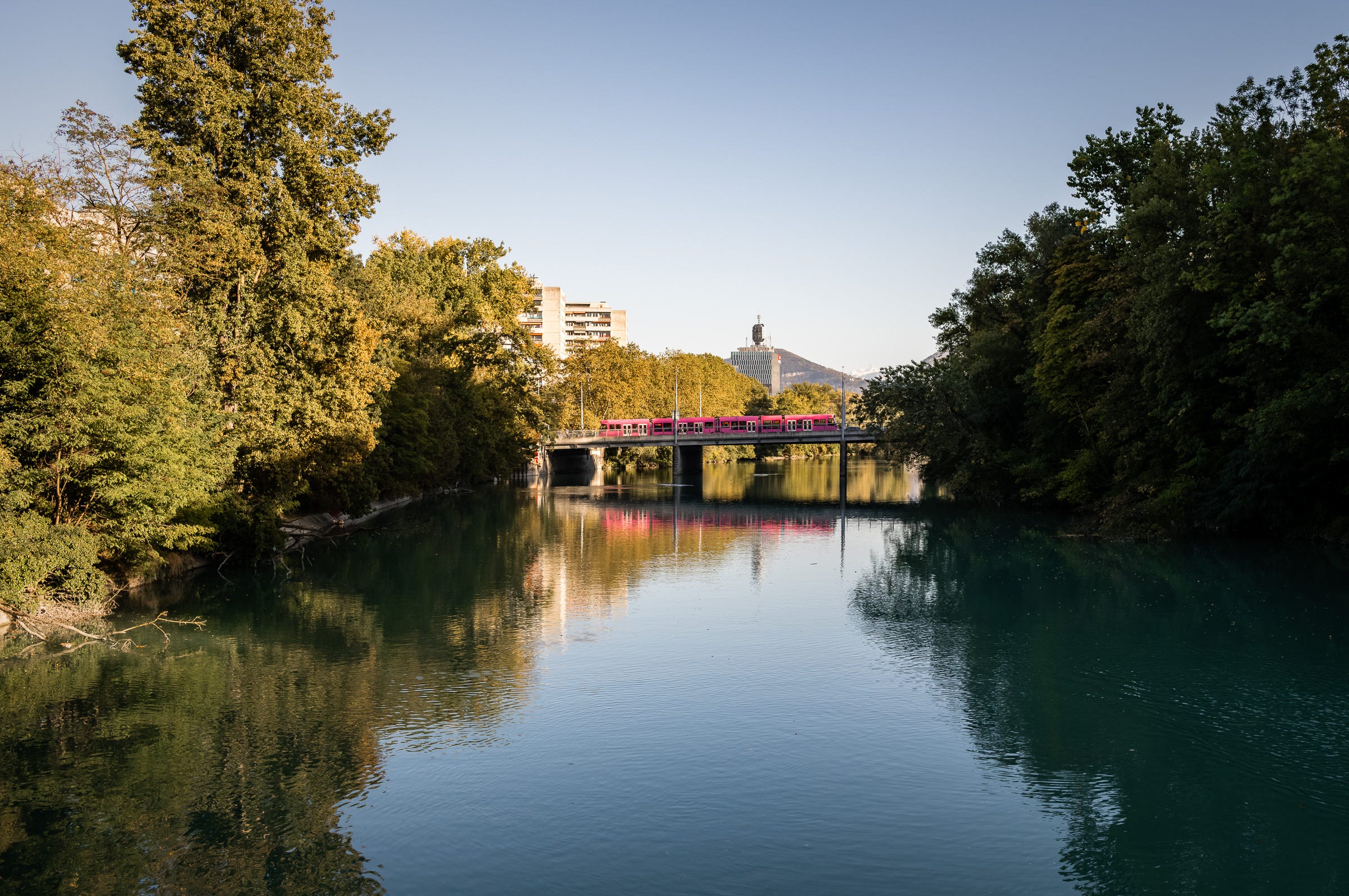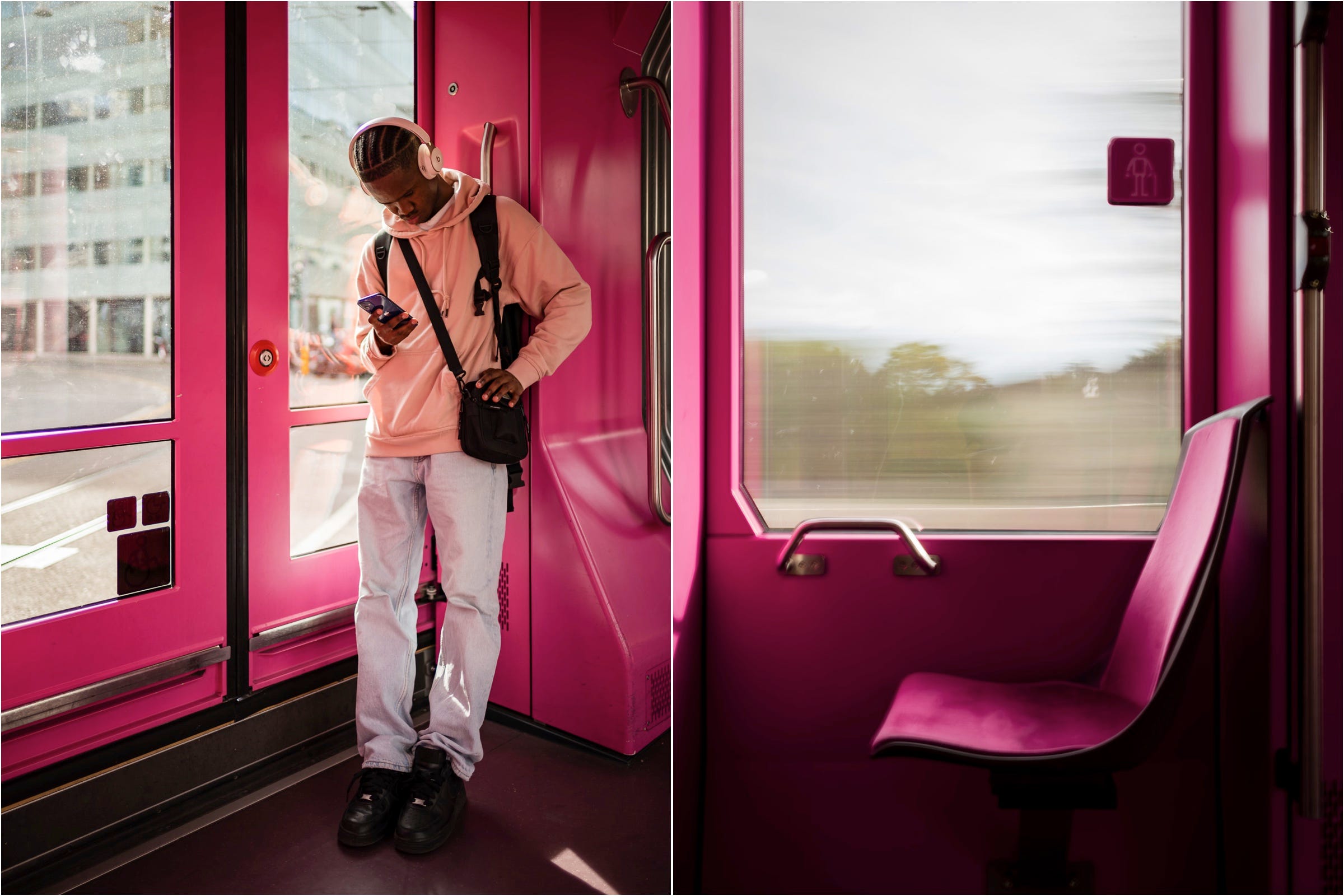Beyond the Frame 15/
For the love of the Zine. An elusive pink tram. Plus news of “Foto”, a new photo-sharing platform dedicated to photographers’ interests.
The Zine
(Pronounced “Zeen”, as in Magazine or Fanzine.)
If, like me, you are a person of a certain vintage, congratulations on still being awake and well done for finding your reading glasses (they were on your head, weren’t they?)
Do you remember zines? A few poorly-photocopied, hand-folded pages of text, sketches and photos. Zines were the epitome of do-it-yourself, home-crafted, self-publishing. Excellent content delivered with low-quality production values.
Most of the ones I collected at school contained pop music news, song lyrics, hand-drawn portraits of our favourite pop icons, cartoons, and grainy, black and white photos copied from music magazines like NME and Smash Hits.
They were lovingly made, carefully curated, and distributed in small numbers to devoted readers.

Well, good news, zines are back, baby.
(Apologies for my use of “baby”. I was momentarily overwhelmed with excitement. It won’t happen again.)
Ahem! So, yes, zines are back. Modern zines are compiled with all the same love and attention to detail and now benefit from modern publishing technology. They are beautifully printed in full-colour and have become highly-collectible works of art.
Café Royal Books
I picked up a couple of zines at Tate Britain recently. The marvellous Café Royal Books is a family business that produces an average of one book per week.

Subjects are as diverse as they are compelling and I especially like the music-related zines, such as Northern Soul, Glastonbury 1971, The Post-Punk Years 1987–1990, Isle of Wight Music Festival 1969 & 1970, and — an event that we might benefit from resurrecting — Rock Against Racism Live.
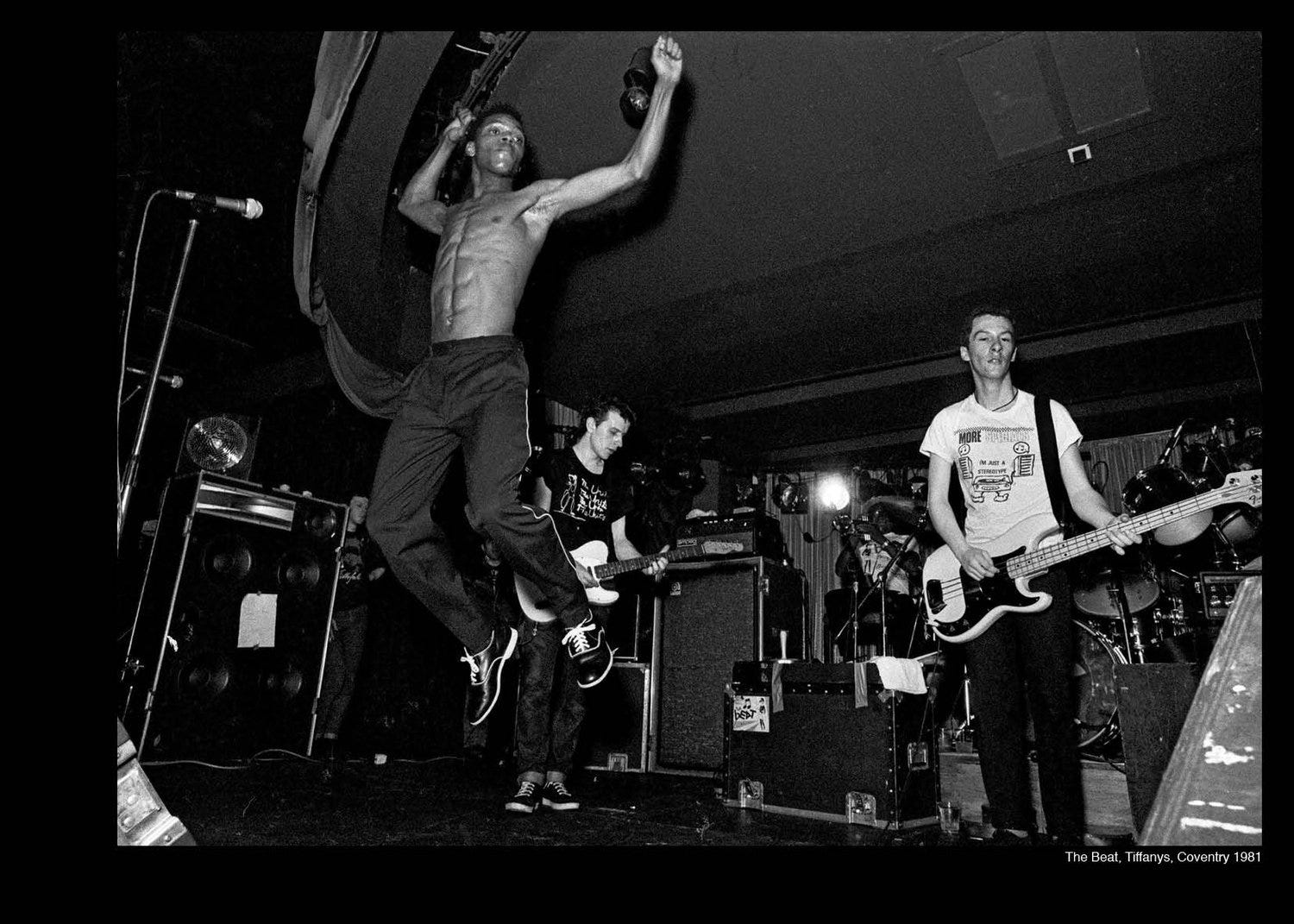
Café Royal Books founder Craig Atkinson explains the zine concept, “The books need to be affordable — they’re cheaper than a London pint, accessible, useful, utilitarian…They need to matter — they need to function.”
“We believe in democratising art, ensuring our publications remain affordable and widely accessible. Our publications focus on functionality and clarity, free from decoration, and over-design.”

“There’s something about knowing someone has crafted an object by hand — put time into selecting the material they use, the methods and techniques. Something kind of historic and reassuring. I don’t like buying many things but the things I do, I like to last a long time — I like the idea of things wearing in, rather than wearing out.”
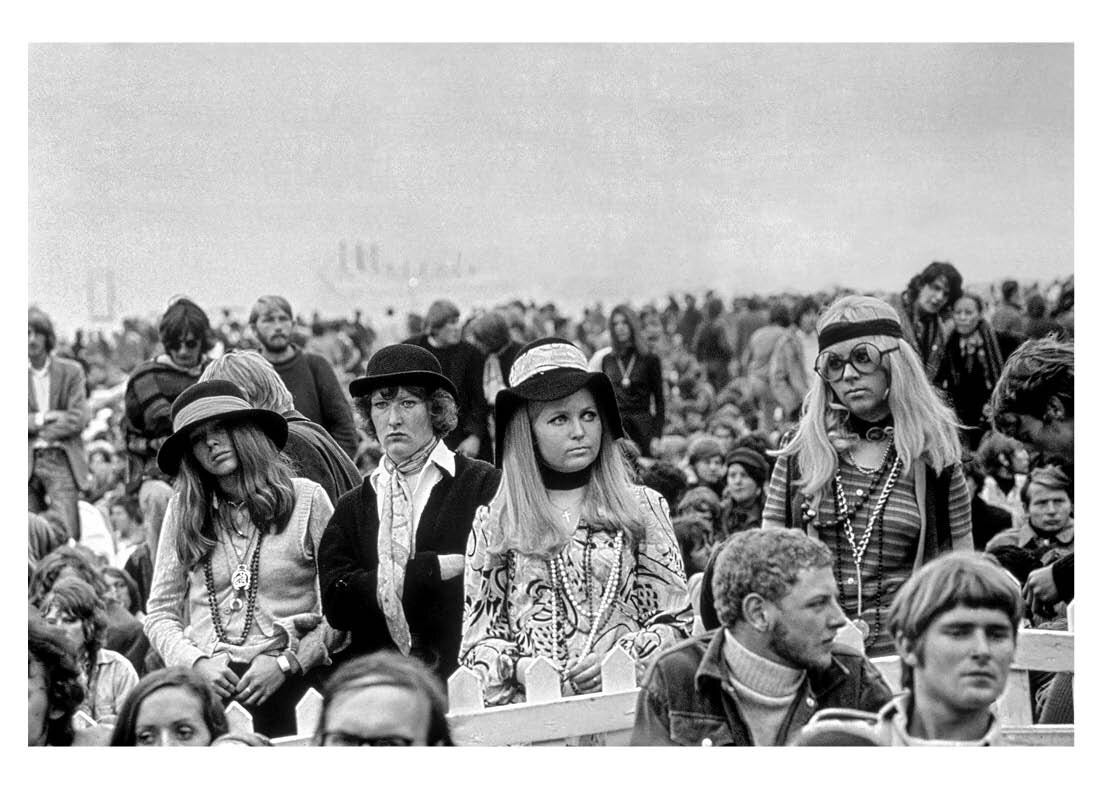
There’s so much to choose from and a great deal to enjoy in the Café Royal Books collection. If you can own a lovingly-made piece of visual history for less than the price of London pint, why wouldn’t you?
Another Place Publishing
I’ve also started collecting zines produced by another independent publisher, Iain Sarjeant’s Another Place Press.
Another Place zines feature “contemporary photography projects which explore our relationship with ’place’”.
“We are committed to producing high quality affordable photo books - our aim is to make inspiring photography from around the world as accessible to as wide an audience as we can.” — Iain Sarjeant
Another Place zines are carefully designed with layouts that give photographs space to breathe.
One of my favourites is Ertholmene by Anne Lass (now, like many of the early editions, sold out).

“Ertholmene is a unique archipelago comprising the easternmost point in Denmark. With my photographs, I try to convert the feeling of walking around on the island into linguistic imagery – The demarcation between sea and land, reflections of sky and water, lichen, rock, wildlife and human construction slowly blur, converging into one.”
I really admire the sequencing of the two images in the bottom of these two pages. I think a lot of the enjoyment from creating a zine is found in the editing and sequencing of images to create something greater than each individual photograph alone.
I’m also tempted to order Eugene Schlumberger’s zine, Rain.
The world as seen through a rain-smeared window. Such a familiar sight to a Brit! It’s been 16 years since I left England. Perhaps Eugene’s zine will make me feel homesick. Then again…
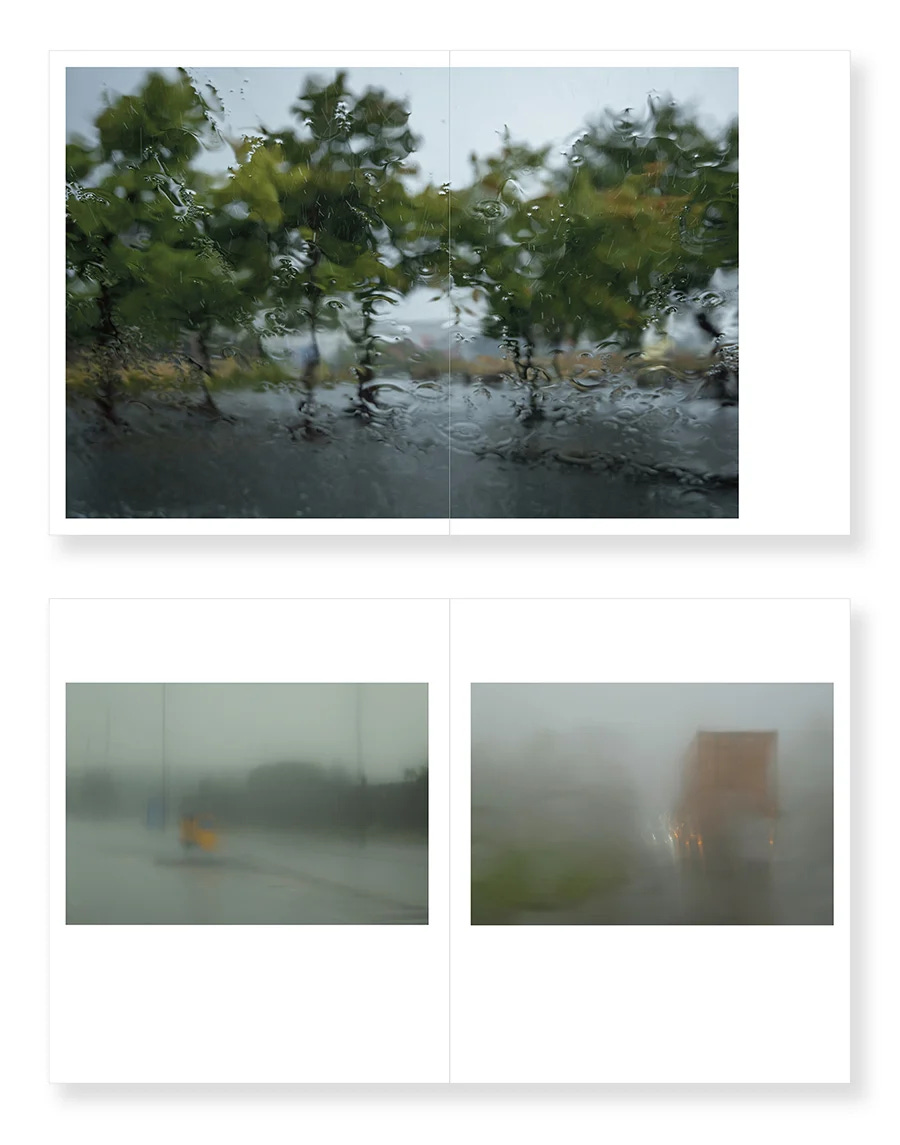
I love photography zines because they’re often the product of a personal project. They have an intimacy which is not so readily found in large-format photography books. In an age where photographs are too often reduced to a thumb-flicking scroll and the diminished size of an iPhone screen, holding real pages in one’s hands can rekindle our appreciation of the photograph.
PS - Yes, I ordered a copy of Eugene Schlumberger’s Rain zine and a copy of Joe Dixey’s Diesel and Dust whilst I was there.

Waiting for the Light
My third and final zine recommendation is a specific one; Diana Jarvis’s Waiting for the Light.
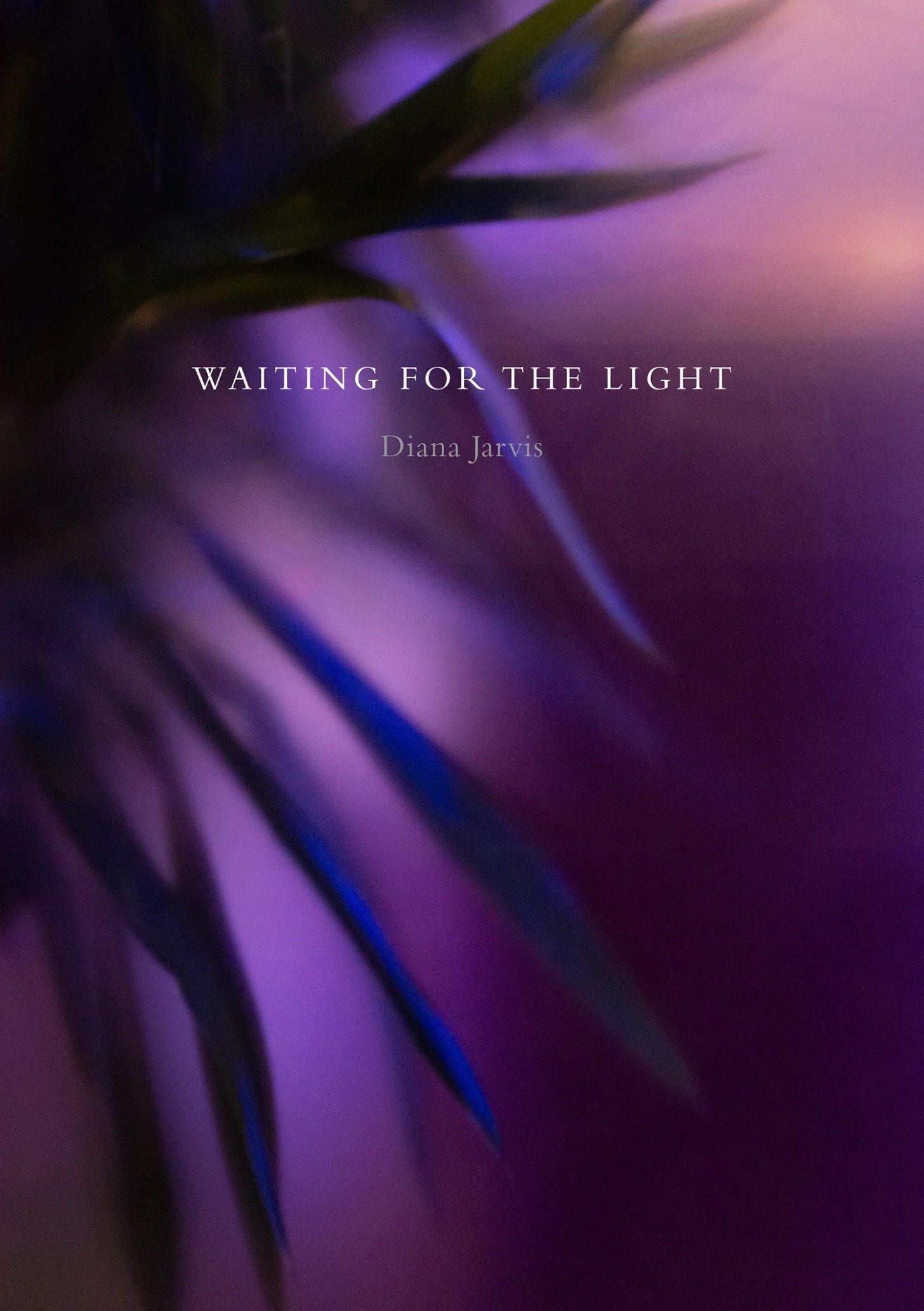
Diana created her project in the English seaside town of Margate during Covid lockdowns.
“The days were short, the nights were long and time seemed to stretch into an amorphous jelly of all-encompassing introspection. We were all locked down in our houses with nothing to do but work, watch TV, cook, eat, look deeply into the abyss, wait for the hours to pass and then do it all again the following day. This was a tough call for a grounded travel photographer.”
Diana began to cultivate houseplants during lockdowns. On solitary evening walks she started to notice the silhouettes of other people’s houseplants sitting on windowsills behind frosted glass.
“These nightly jaunts became a bit of an obsession and the plants became an embodiment of what we were all going through; sitting there all night long waiting for the glimmers of daylight to nourish and nurture them, sitting pretty in eternal faith that the darkness would lift, waiting for the light at the end of the night….waiting for the light.”
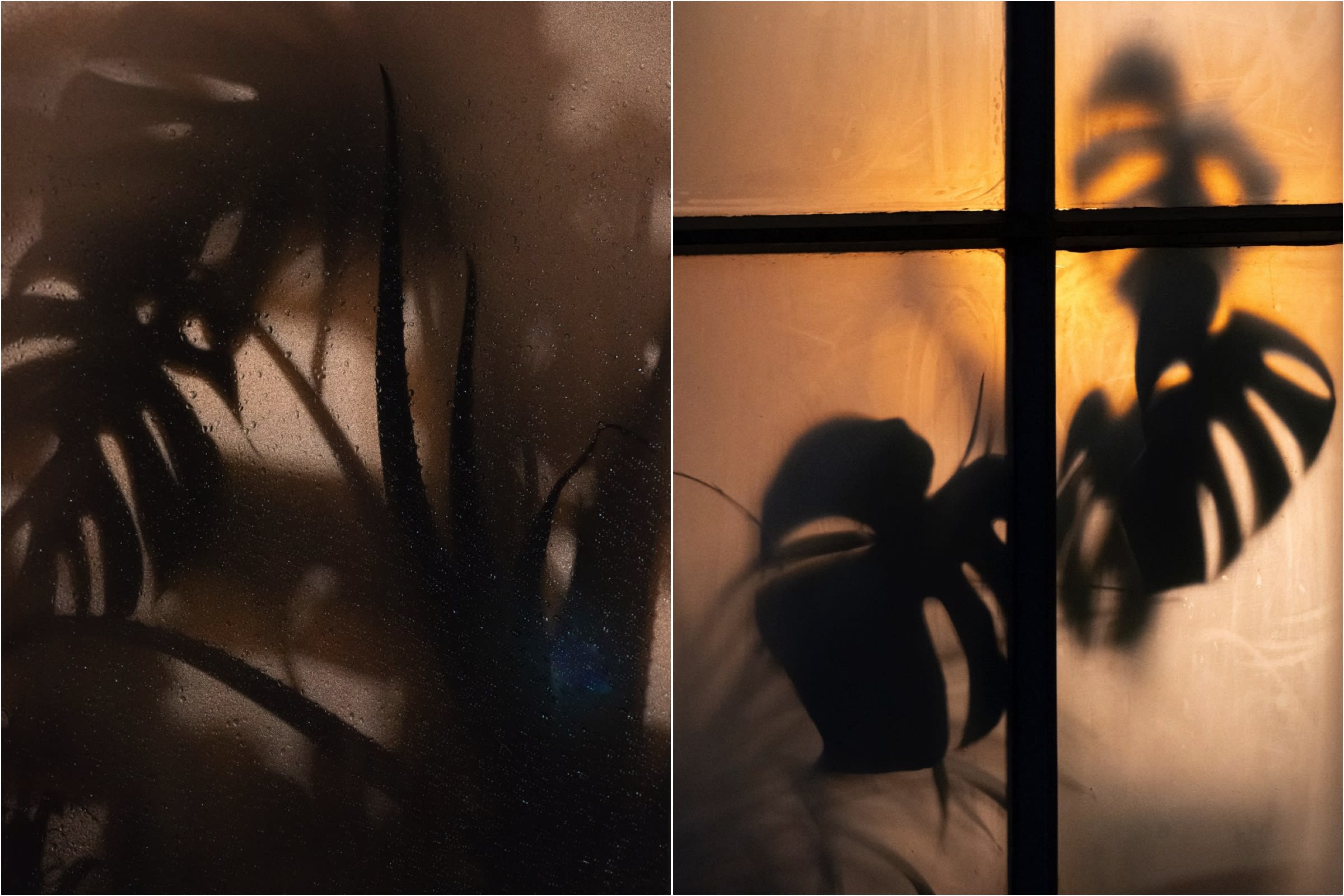
As a fellow travel photographer, I recognised Diana’s frustration at being stuck at home. I found her project when Covid lockdowns were still being enforced and receiving her book in the post felt like I’d made a meaningful connection with a prisoner in an adjacent cell.
Diana’s images of her neighbours’ houseplants are gorgeous and, like many photography zines, the images inside are unadorned with captions. No distractions. I like that.
You’ll find plenty of informative articles about creating zines online. This one, titled, somewhat unimaginatively, Making a Zine, on the Photographer’s Gallery website is a good place to start.
PS - I’m not affiliated with any of these zine publishers and don’t receive any perks or commission. I just like them and hope you will too.
A Zine Announcement
I’m inspired.
It’s time to make a zine.
This is the predictable but, nevertheless, exciting conclusion I’ve come to.
I have a couple of ideas for zines featuring photographs that haven’t previously been published. Images from personal projects that I’ve worked on because I find the subjects unusual, intriguing, under-documented, visually and experientially delightful.
Allow me to introduce the subject of my first zine (coming soon).
Monochrome Rose — A zine in the making
Geneva’s “Pink Tram” is a mobile work of art, conceived by artist Pipilotti Rist. It’s pink on the outside. It’s pink on the inside. The public notices and the badges on seats are pink. There’s no advertising (which should be encouraged) and it looks, in the words of Pipilotti Rist, “as if it has emerged from taking an exquisite bath in a sea of colour, with the drops of pigment still dripping today over the whole of its body.” Well, quite!
The tram was commissioned as part of Geneva’s Art + Tram project. Six public works of art are located along the city’s Number 14 tram line. The pink tram, or Monochrome Rose to give her the correct name, connects them all.
Having read about the project, I decided to take a day out and visit each of the art works. Each is fascinating but the pink tram impressed me most of all. It’s just so… pink!
However, the pink tram is elusive.
"As a sensual incursion into everyday experience, this project integrates a surprise factor, since it will never be possible to predict where or when the tram will pass by.”
When I’m not looking for her, I might catch a flash of colour out of the corner of my eye, look up and see Monochrome Rose sliding around the corner of the Lindt Chocolate shop. Frustratingly, she once appeared on a distant bridge, taunting me and my 28mm lens.
So I decided to stop searching for her and to go about my days in Geneva with an air of casual indifference. Feigning a lack of interest did the job. Ever since, she has appeared more frequently. For example, I was waiting for the Number 7 bus earlier this week, heading home with bags of groceries, when Monochrome Rose sidled up behind me, only the whispered “shusssh” of her doors revealing her presence.
But I was prepared. I leapt on board. I had my camera gear in those grocery bags. And I followed her to the end of the line and back again. Ha!
However, the game continues. Last night, knowing that I’d be writing about her today and hoping to make more photos, I went to the city centre and waited for two hours at the Bel-Air tram stop. Monochrome Rose did not appear. I strongly suspect if a tram could snigger, I might have found her hiding behind the Patek Philippe watch emporium, chuckling at my misplaced attempt to predict her appearance.
I remain determined to spend enough time with Monochrome Rose to make a collection of images for a zine. I know the cat and mouse game we play will challenge my patience and perseverance to their limits. And I’m ready.
As soon as the first copies of the Monochrome Rose zine are available, I’ll let you know. Paid newsletter subscribers will be eligible for a discount. Founder Members will receive a free copy.
Foto App
I’ve been helping beta test a new photo sharing platform. The Foto app is what Instagram “ought” to be.
No advertising
No cropping
Chronological feed
Respecting EXIF/IPTC data
Free to use
I’m hopeful that Fotos will become the most widely-used photo sharing platform. I appreciate being able to view uncropped photos without intrusive advertising.
“Foto provides an opportunity to create a space that values and celebrates the artist.”
You can learn more about Foto, which will soon be opening up for public beta testing, and you can follow progress on the Foto Substack.
If you join the platform, please let me know so that I can follow your account. You’ll find me @gavingough.
Beyond the Frame 14/
A Photo workshop story from Bhutan.
What is your camera's Serendipity Rating?
What is a watermark and how to create a custom watermark in Lightroom Classic.



